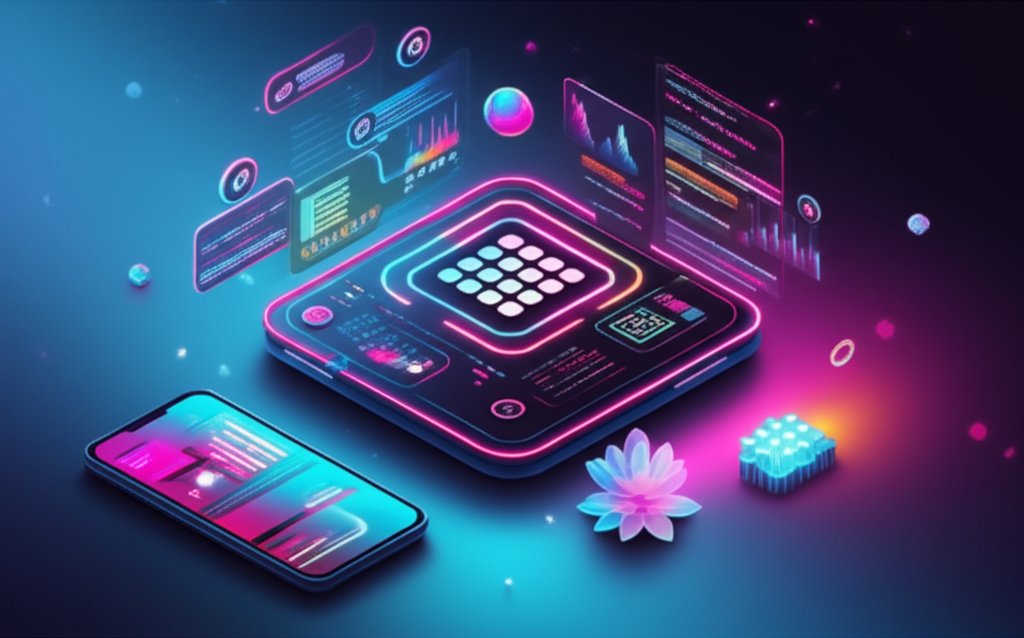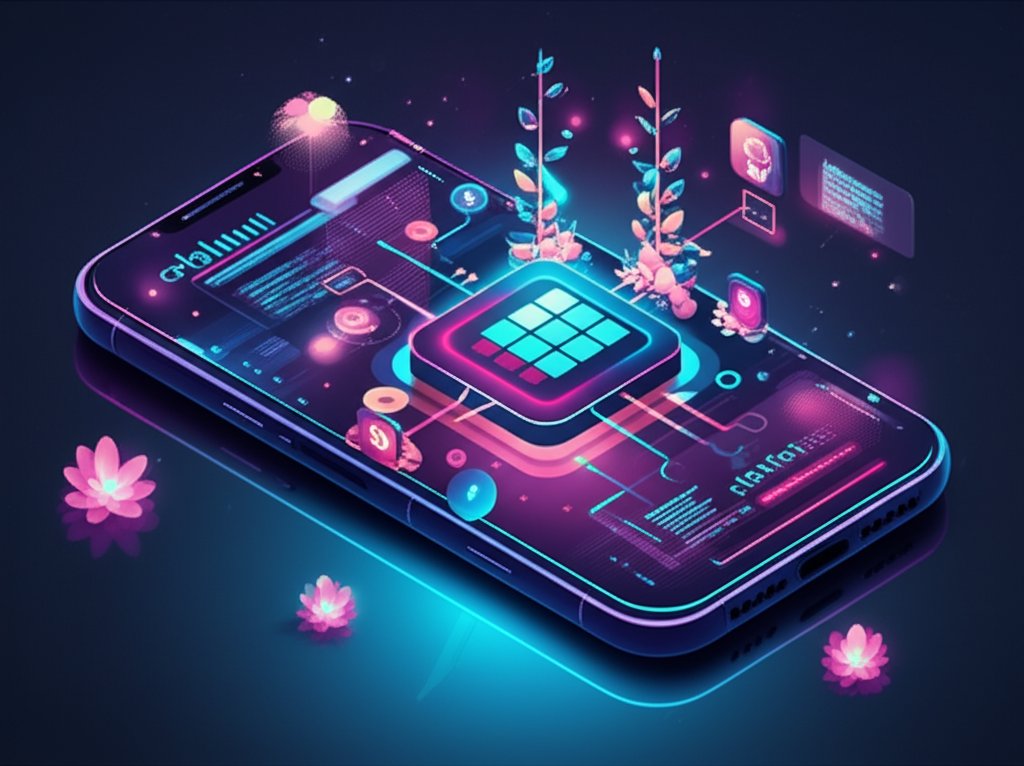That little grid of dots on your phone’s home screen—the apps button—used to be the undisputed gateway to everything. It was a simple, reliable tap that opened a world of tools and entertainment. But as our phones evolved, that button started to play hide-and-seek. On some devices, it vanished entirely, replaced by a gesture you might not even know exists.
If you’ve ever found yourself wondering where it went, how to get it back, or how to master its modern equivalent, you’re in the right place. This guide is your complete manual for understanding, customizing, and troubleshooting the apps button and the app drawer it leads to. It’s time to take back control and make accessing your applications faster and more intuitive than ever.
At a Glance: Mastering Your Apps
Don’t have time for the full deep-dive? Here are the essential takeaways for taming your app access:
- The Classic Apps Button: Traditionally an icon (often a grid of dots or squares) on your home screen’s dock that opens your full list of installed applications, known as the “app drawer.”
- The Modern Method: Most new Android and iOS phones have replaced the physical button with a “swipe up” gesture from the bottom of the home screen to open the app drawer.
- It’s Often Optional: On many Android phones, especially Samsung devices, you can choose whether to show or hide the apps button icon in your home screen settings.
- Troubleshooting is Simple: If your apps button is missing or not working, the fix is usually straightforward: check your home screen settings, restart your phone, or clear your launcher’s cache.
- You Don’t Need to “Close All”: While the app drawer helps you manage running apps, modern operating systems like Android are excellent at managing memory. Constantly closing apps is usually unnecessary.
What Exactly Is the Apps Button, Anyway?
At its core, the apps button is a shortcut. Think of your phone’s home screen as your desk—you keep your most-used tools right there for easy access. But what about all the other tools in your desk drawers? The apps button is the handle on that main drawer.
One tap (or swipe) opens the app drawer (sometimes called the app screen or app library), which is the comprehensive, alphabetized list of every single application installed on your device.
Its primary functions are to:
- Centralize Your Apps: It provides one single location to see and find everything you have installed, preventing your home screens from becoming a chaotic mess.
- Launch Any App: It’s the universal starting point for opening an app that isn’t already on your home screen.
- Manage Your Collection: From the app drawer, you can typically uninstall apps, add them to your home screen, or view their info.
Over the years, the form of this “button” has changed. On early Android devices, it was an unmissable icon, a permanent fixture in the dock at the bottom of the screen. As designers sought cleaner, more minimalist interfaces, they began to favor gestures. Today, the swipe-up gesture is the new default, but the classic button still holds a special place for users who prefer a clear, tappable icon.
Customizing Your Gateway: Bringing the Button Back and More
One of the best things about Android is its flexibility. If your phone’s manufacturer decided to hide the apps button by default, you almost always have the power to bring it back. This is especially common on Samsung devices running One UI, where a clean, button-free look is the default.
How to Restore a Missing Apps Button (Samsung Example)
If you prefer a dedicated button to the swipe-up gesture, here’s how to re-enable it on most modern Samsung phones. The steps are similar for other Android brands that offer this option.
- Long-press an empty space on your home screen. This will zoom out and open the home screen editing menu.
- Tap on Settings (it usually looks like a gear icon).
- Look for an option named “Show Apps screen button on Home screen.”
- Toggle it on.
A moment later, you’ll see the familiar grid icon reappear in your dock at the bottom of the screen. You’ve successfully reclaimed your button.
Tailor the App Drawer to Your Liking
Customization doesn’t stop with just the button. Once you’re inside the app drawer, you can often change how your apps are displayed. Do you prefer a compact grid or a scannable list?
While the exact path varies, you can generally find these options in your phone’s main settings menu:
- Go to Settings > Home screen.
- Look for a setting called “Apps screen grid” or “Home screen layout.”
- Here, you can often choose different grid sizes, like 4×5, 5×5, or 5×6, to fit more (or fewer) apps onto a single page. A denser grid means less swiping.
Some launchers even let you organize apps into folders directly within the app drawer or change the sort order from alphabetical to something else, like most used or recently installed. Exploring these settings is key to making [placeholder_link slug=”apps-button-on-android” text=”Your Android apps button”] and the drawer it opens feel truly yours.
When Things Go Wrong: A Troubleshooting Guide

What happens when you tap the button and nothing happens? Or when you swipe up and your phone just sits there? A non-functional app drawer can be frustrating, but the fix is usually within reach.
Before you panic, walk through these steps in order, from simplest to most involved.
Step 1: The Classic Restart
It’s the oldest trick in the tech support book for a reason: it works. Restarting your phone clears out temporary glitches and memory leaks that might be causing your home screen launcher (the app that manages your home screen and app drawer) to misbehave.
Press and hold your power button, then tap “Restart.” Wait for your phone to boot back up and see if the issue is resolved.
Step 2: Check Your Home Screen Settings
Did the button just disappear? As we covered above, you might have hidden it by accident. Long-press on your home screen, go into its Settings, and ensure the option to show the apps button is enabled.
Sometimes, a system update can revert this setting to its default (hidden) state. It’s always the first place to check if the icon has vanished unexpectedly.
Step 3: Clear the Launcher’s Cache
Your phone’s launcher is an app just like any other. Over time, its cached data can become corrupted, leading to strange behavior like a non-responsive apps button. Clearing the cache is a safe and effective troubleshooting step.
- Open your phone’s main Settings app.
- Go to Apps or Apps & notifications.
- Find your default launcher. It might be called “One UI Home” (Samsung), “Pixel Launcher” (Google), or whatever launcher you have installed. You may need to tap “See all apps” to find it.
- Tap on your launcher, then select Storage & cache.
- Tap Clear cache. Do not tap “Clear storage” or “Clear data” yet, as this will reset your entire home screen layout.
After clearing the cache, return to your home screen and test the apps button again.
Step 4: Rule Out a Hardware Issue
If the button icon is there but doesn’t respond to your touch—and other icons in the same area also don’t work—you might be facing a hardware problem with your screen’s digitizer.
A simple way to test this is to move an app icon to the exact spot where the apps button is. If you can’t tap that app icon either, it’s likely a screen issue, not a software bug. Contacting your device manufacturer for support would be the next step.
App Access Across Different Worlds
The concept of a central place for all your apps isn’t unique to Android. While the execution differs, the goal is the same across platforms: to provide a clean, organized directory.
Android: The Chameleon
- Modern Android (Most Phones): The standard is now a quick swipe up from the bottom of the home screen. This gesture is fluid, fast, and saves precious screen real estate.
- Older Android / Custom Launchers: The dedicated, tappable apps button icon in the dock remains a popular choice for users who prefer a clear, visual target.
- Some Devices (e.g., Xiaomi): Certain Android skins, particularly those popular in Asian markets, omit the app drawer entirely by default, placing all installed apps directly on the home screens, similar to iOS.
iOS: The App Library
For years, iPhones had no app drawer. Every app you installed landed on a home screen, leading to endless pages of icons. With iOS 14, Apple introduced the App Library. It’s a dedicated screen to the right of your last home screen that automatically organizes all your apps into smart categories like “Social,” “Creativity,” and “Recently Added.” You can access it by swiping left past all your home screens.
Windows 11: The Revamped Start Menu
On a desktop, the Start Menu is the long-standing equivalent of the apps button. In Windows 11, clicking the Start icon opens a view with pinned apps. To see everything, you simply click the “All apps” button in the top right corner. This reveals a classic, alphabetized list you can scroll through—a direct parallel to the app drawers on our phones.
Frequently Asked Questions About the Apps Button
Got a nagging question? Let’s clear up some common points of confusion.
Why did my apps button disappear after an update?
Phone manufacturers sometimes change the default home screen settings with major software updates. The most common reason is to align with the modern trend of using a swipe-up gesture instead of a physical button. Your phone likely switched to the gesture-based system, but you can almost always switch it back in the home screen settings.
Do I really need an apps button anymore?
Functionally, no. The swipe-up gesture accomplishes the exact same thing: opening the app drawer. The choice is purely about personal preference. If you like the visual cue and the definitive “tap” of a button, keep it. If you prefer a cleaner look and have mastered the swipe gesture, you can safely hide the button to free up space in your dock for another app.
How do I close apps from the app drawer?
The app drawer is for launching apps, not closing them. To see and close recently used apps, you use the “Recents” or “Overview” screen. The gesture for this is usually to swipe up from the bottom of the screen and hold for a moment. This will fan out all your open apps as cards. You can then swipe an individual app card up to close it or look for a “Clear all” option.
Is it bad to leave many apps open?
This is a persistent myth. Modern operating systems like Android and iOS are designed to manage memory and battery life intelligently. Apps left open in the background are typically “frozen” in a low-power state. The system will automatically close apps if it needs to free up resources for what you’re actively doing. Force-closing apps all the time can sometimes use more battery, as the phone has to fully reload the app from scratch the next time you open it.
Your Phone, Your Rules
Whether it’s a visible button, a subtle swipe, or an automatic library, the goal of the apps button remains unchanged: to bring order to your digital life. It’s the bridge between a clean, curated home screen and the full, powerful potential of every app you’ve installed.
Don’t let your device’s default settings dictate your workflow. Dive into your home screen settings. Experiment with showing or hiding the button. Try out a different grid layout in your app drawer. The best setup is the one that lets you find what you need with the least amount of friction, turning your phone into a more efficient and personal tool. Master that simple gesture or bring back that trusty button—the choice is yours.
- Make The Apps Button Work For You On Your Phone - November 27, 2025
- Essential Productivity Apps for Android to Work Smarter - November 26, 2025
- Utility Android Tool Helps Manage, Repair, and Customize Your Phone - November 25, 2025










